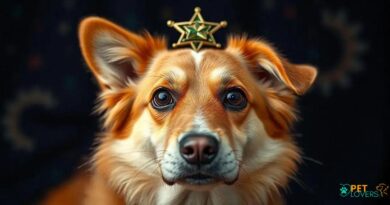What is Low activity breeds
Understanding Low Activity Breeds
Low activity breeds refer to dog breeds that typically require less exercise and physical stimulation compared to their more energetic counterparts. These breeds are often ideal for individuals or families who may not have the time or energy to engage in extensive daily exercise routines. Understanding the characteristics of low activity breeds can help potential dog owners make informed decisions about which breed might best fit their lifestyle.
Characteristics of Low Activity Breeds
Low activity breeds often exhibit a calm demeanor and a relaxed attitude towards life. They tend to enjoy lounging around the house and may prefer short walks or play sessions over vigorous exercise. Breeds such as Bulldogs, Basset Hounds, and Shih Tzus are known for their low energy levels, making them suitable companions for those who appreciate a more laid-back lifestyle.
Benefits of Owning Low Activity Breeds
One of the primary benefits of owning a low activity breed is the reduced need for exercise. This can be particularly advantageous for seniors, busy professionals, or families with young children. Low activity breeds often adapt well to apartment living and require less space to roam, making them a practical choice for urban dwellers. Additionally, their calm nature can contribute to a peaceful home environment.
Common Low Activity Breeds
Several dog breeds are classified as low activity breeds. Some of the most common include the Cavalier King Charles Spaniel, French Bulldog, and Pekingese. These breeds are known for their affectionate personalities and tend to bond closely with their owners. Their lower energy levels mean they are often content to snuggle on the couch or enjoy leisurely strolls around the neighborhood.
Exercise Needs of Low Activity Breeds
While low activity breeds do not require extensive exercise, they still benefit from regular physical activity to maintain a healthy weight and overall well-being. Short walks, gentle playtime, and mental stimulation through puzzle toys can help keep these dogs engaged without overwhelming them. It’s essential for owners to find a balance that meets their dog’s needs without pushing them beyond their comfort zone.
Health Considerations for Low Activity Breeds
Low activity breeds can be prone to certain health issues, particularly if they lead a sedentary lifestyle. Obesity is a common concern, as these breeds may not burn enough calories to maintain a healthy weight. Regular vet check-ups and a balanced diet are crucial in preventing health problems. Owners should also be aware of breed-specific issues, such as respiratory problems in brachycephalic breeds like Bulldogs.
Training Low Activity Breeds
Training low activity breeds can be a rewarding experience, as many of these dogs are eager to please their owners. Positive reinforcement techniques work well with these breeds, and short training sessions can keep them engaged without causing fatigue. Socialization is also important, as it helps low activity breeds become well-adjusted companions who can comfortably interact with other dogs and people.
Low Activity Breeds and Families
Low activity breeds can make excellent family pets, especially for families with young children or elderly members. Their gentle nature and lower energy levels mean they are often more tolerant of children’s antics and can adapt to quieter household environments. However, it’s essential for families to teach children how to interact respectfully with dogs to ensure a harmonious relationship.
Choosing the Right Low Activity Breed
When selecting a low activity breed, potential owners should consider their living situation, lifestyle, and personal preferences. Researching different breeds and their specific needs can help individuals find the perfect match. Visiting local shelters or breed-specific rescues can also provide opportunities to meet low activity breeds in person and understand their unique personalities.
Conclusion
Low activity breeds offer a wonderful option for those seeking a loving and loyal companion without the demands of high energy exercise. By understanding their characteristics, needs, and benefits, potential dog owners can make informed choices that lead to fulfilling relationships with their furry friends.




